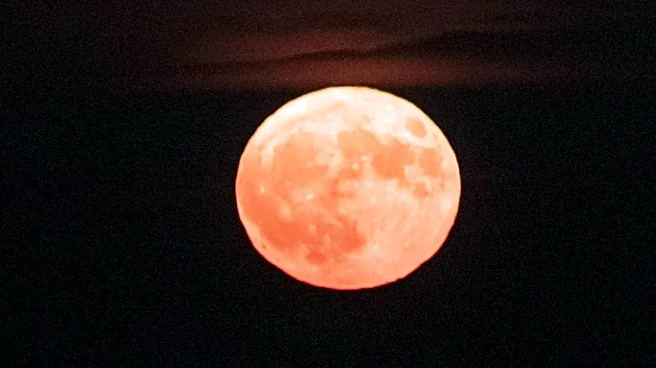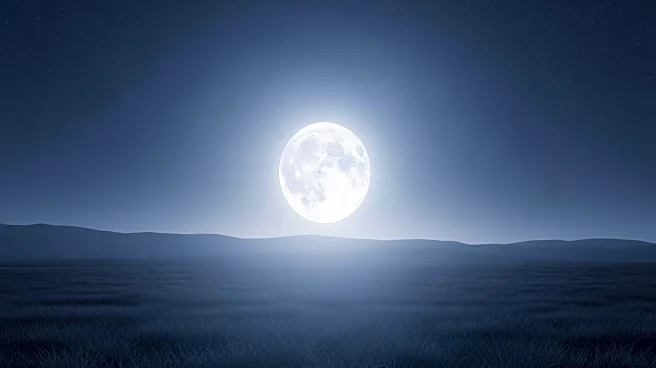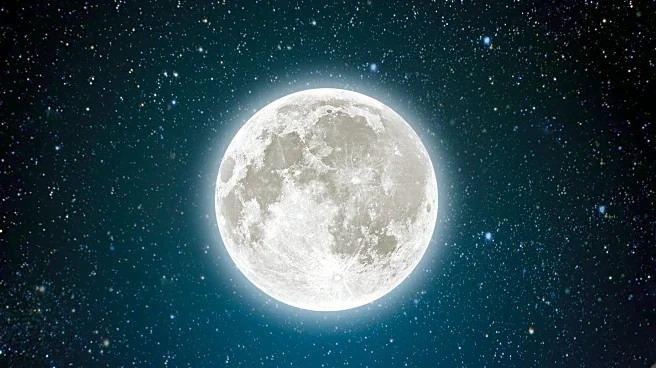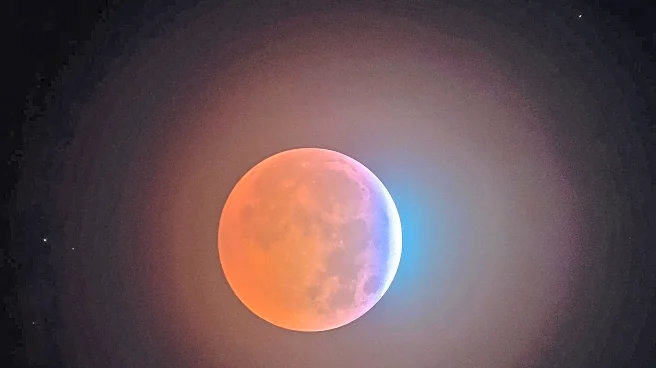What's Happening?
The November full moon, known as the Beaver Moon, is set to be the second supermoon of 2025. This celestial event occurs when the moon is at its perigee, the closest point to Earth in its orbit, making
it appear up to 14% larger and 30% brighter than usual. The Beaver Moon will reach its peak illumination on November 5 at 8:19 a.m. ET, but it will be visible on the evenings of November 4 and 5. The name 'Beaver Moon' is derived from the time of year when beavers take shelter in their dams, and historically, when people set beaver traps during the fur trade. Supermoons are relatively common, occurring three to four times a year, with the first of 2025 being the Harvest Moon in October.
Why It's Important?
The supermoon phenomenon captivates both amateur and professional astronomers, offering a unique opportunity to observe the moon's surface in greater detail. This event also holds cultural significance, as each month's full moon has a traditional name that reflects historical and seasonal activities. The Beaver Moon, in particular, highlights the intersection of natural cycles and human history. For the general public, supermoons provide a chance to engage with astronomy and appreciate the natural world, fostering a sense of wonder and curiosity about the universe.
What's Next?
Following the Beaver Moon, another supermoon is expected in December, concluding the series of supermoons for 2025. As these events continue to draw public interest, they may inspire educational programs and community events centered around astronomy. Observatories and science centers might organize viewing parties and workshops to enhance public understanding of lunar phenomena. Additionally, the increased visibility of the moon during a supermoon could lead to more detailed scientific observations and research.











